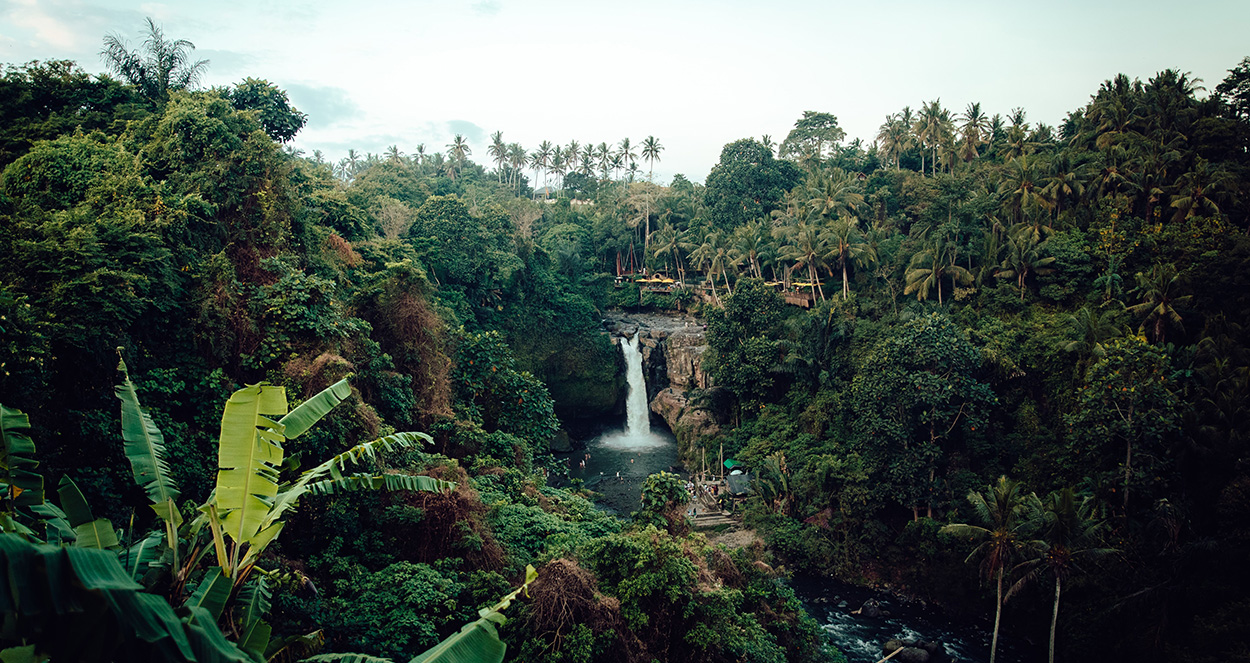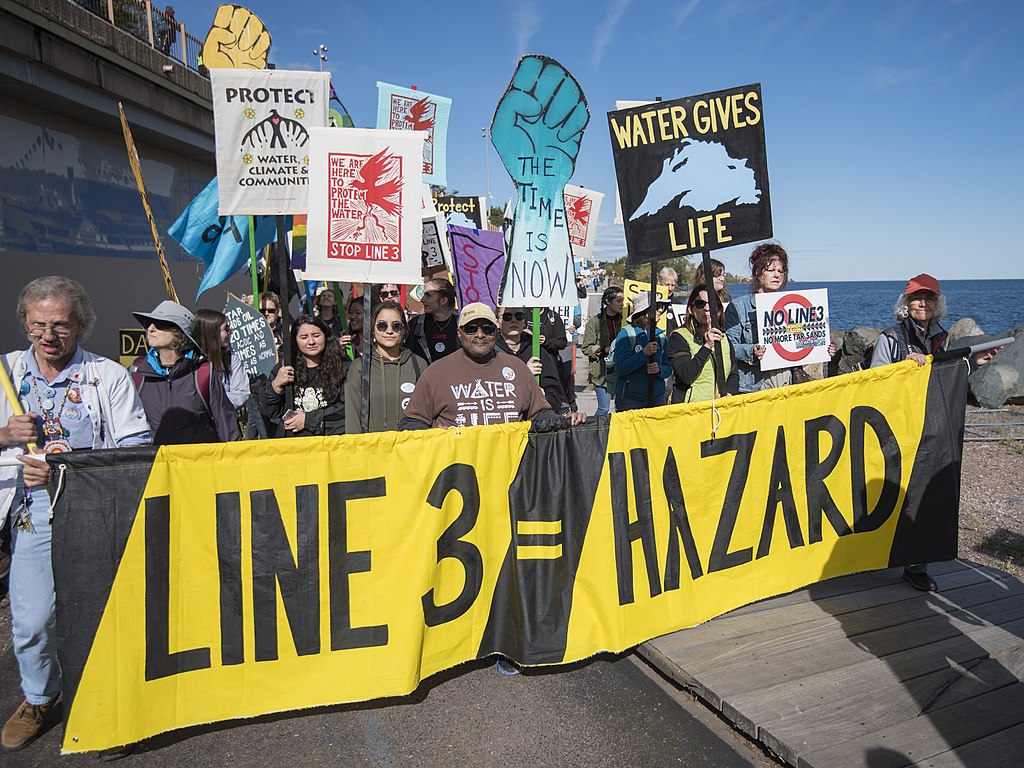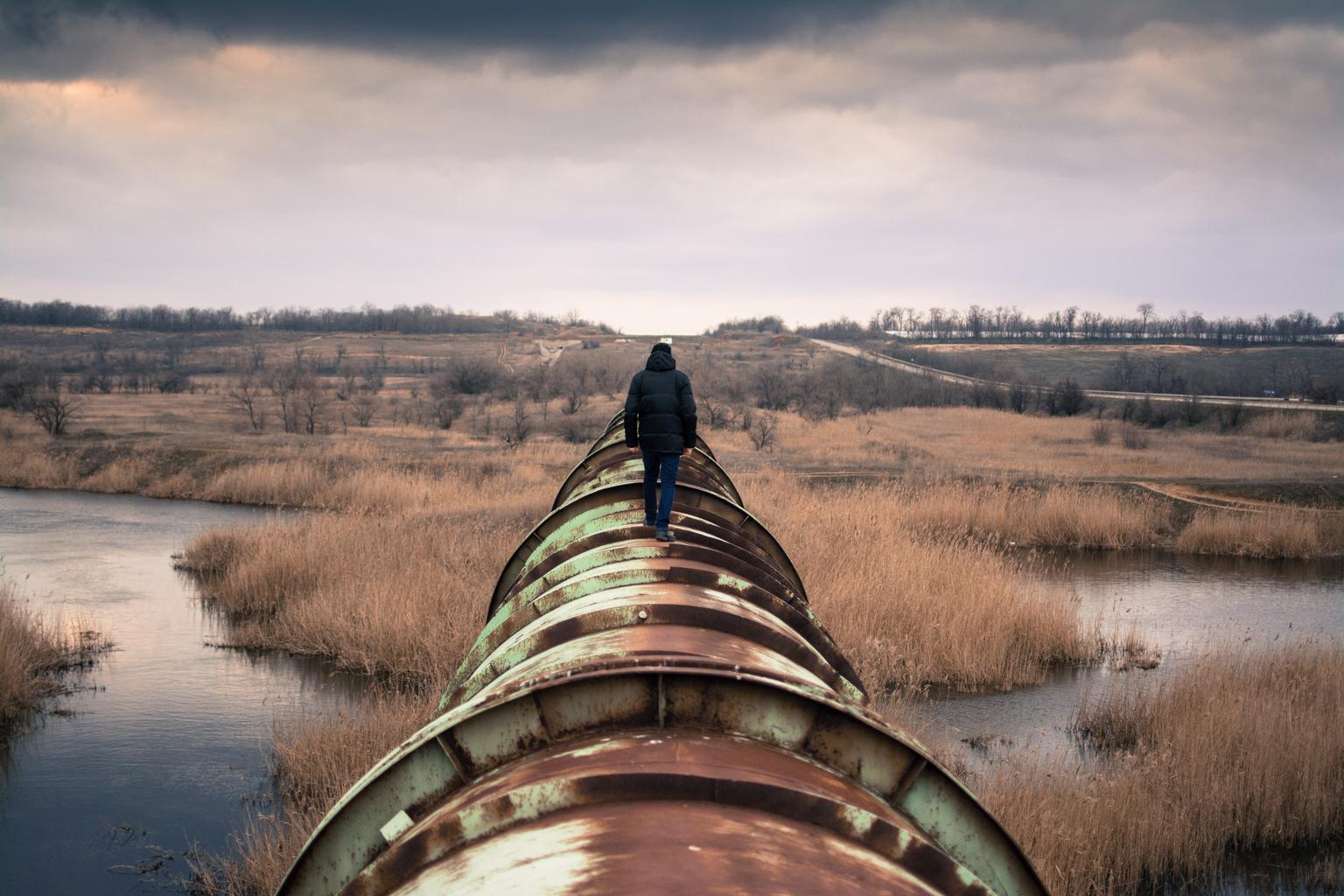
The Problem
This is an excerpt from the book Bright Green Lies, P. 1-7
By LIERRE KEITH
“Once our authoritarian technics consolidates its powers, with the aid of its new forms of mass control, its panoply of tranquilizers and sedatives and aphrodisiacs, could democracy in any form survive? That question is absurd: Life itself will not survive, except what is funneled through the mechanical collective.”1
LEWIS MUMFORD
There is so little time and even less hope here, in the midst of ruin, at the end of the world. Every biome is in shreds. The green flesh of forests has been stripped to grim sand. The word water has been drained of meaning; the Athabascan River is essentially a planned toxic spill now, oozing from the open wound of the Alberta tar sands. When birds fly over it, they drop dead from the poison. No one believes us when we say that, but it’s true. The Appalachian Mountains are being blown to bits, their dense life of deciduous forests, including their human communities, reduced to a disposal problem called “overburden,” a word that should be considered hate speech: Living creatures—mountain laurels, wood thrush fledglings, somebody’s grandchildren—are not objects to be tossed into gullies. If there is no poetry after Auschwitz, there is no grammar after mountaintop removal. As above, so below. Coral reefs are crumbling under the acid assault of carbon. And the world’s grasslands have been sliced to ribbons, literally, with steel blades fed by fossil fuel. The hunger of those blades would be endless but for the fact that the planet is a bounded sphere: There are no continents left to eat. Every year the average American farm uses the energy equivalent of three to four tons of TNT per acre. And oil burns so easily, once every possibility for self-sustaining cultures has been destroyed. Even the memory of nature is gone, metaphrastic now, something between prehistory and a fairy tale. All that’s left is carbon, accruing into a nightmare from which dawn will not save us. Climate change slipped into climate chaos, which has become a whispered climate holocaust. At least the humans whisper. And the animals? During the 2011 Texas drought, deer abandoned their fawns for lack of milk. That is not a grief that whispers. For living beings like Labrador ducks, Javan rhinos, and Xerces blue butterflies, there is the long silence of extinction.
We have a lot of numbers. They keep us sane, providing a kind of gallows’ comfort against the intransigent sadism of power: We know the world is being murdered, despite the mass denial. The numbers are real. The numbers don’t lie. The species shrink, their extinctions swell, and all their names are other words for kin: bison, wolves, black-footed ferrets. Before me (Lierre) is the text of a talk I’ve given. The original version contains this sentence: “Another 120 species went extinct today.” The 120 is crossed clean through, with 150 written above it. But the 150 is also struck out, with 180 written above. The 180 in its turn has given way to 200. I stare at this progression with a sick sort of awe. How does my small, neat handwriting hold this horror? The numbers keep stacking up, I’m out of space in the margin, and life is running out of time.
Twelve thousand years ago, the war against the earth began. In nine places,2 people started to destroy the world by taking up agriculture. Understand what agriculture is: In blunt terms, you take a piece of land, clear every living thing off it—ultimately, down to the bacteria—and then plant it for human use. Make no mistake: Agriculture is biotic cleansing. That’s not agriculture on a bad day, or agriculture done poorly. That’s what agriculture actually is: the extirpation of living communities for a monocrop for and of humans. There were perhaps five million humans living on earth on the day this started—from this day to the ending of the world, indeed—and there are now well over seven billion. The end is written into the beginning. As earth and space sciences scholar David R. Montgomery points out, agricultural societies “last 800 to 2,000 years … until the soil gives out.”3 Fossil fuel has been a vast accelerant to both the extirpation and the monocrop—the human population has quadrupled under the swell of surplus created by the Green Revolution—but it can only be temporary. Finite quantities have a nasty habit of running out. The name for this diminishment is drawdown, and agriculture is in essence a slow bleed-out of soil, species, biomes, and ultimately the process of life itself. Vertebrate evolution has come to a halt for lack of habitat, with habitat taken by force and kept by force: Iowa alone uses the energy equivalent of 4,000 Nagasaki bombs every year. Agriculture is the original scorched-earth policy, which is why both author and permaculturist Toby Hemenway and environmental writer Richard Manning have written the same sentence: “Sustainable agriculture is an oxymoron.” To quote Manning at length: “No biologist, or anyone else for that matter, could design a system of regulations that would make agriculture sustainable. Sustainable agriculture is an oxymoron. It mostly relies on an unnatural system of annual grasses grown in a mono- culture, a system that nature does not sustain or even recognize as a natural system. We sustain it with plows, petrochemicals, fences, and subsidies, because there is no other way to sustain it.”4
Agriculture is what creates the human pattern called civilization. Civilization is not the same as culture—all humans create culture, which can be defined as the customs, beliefs, arts, cuisine, social organization, and ways of knowing and relating to each other, the land, and the divine within a specific group of people. Civilization is a specific way of life: people living in cities, with cities defined as people living in numbers large enough to require the importation of resources. What that means is that they need more than the land can give. Food, water, and energy have to come from somewhere else. From that point forward, it doesn’t matter what lovely, peaceful values people hold in their hearts. The society is dependent on imperialism and genocide because no one willingly gives up their land, their water, their trees. But since the city has used up its own, it has to go out and get those from somewhere else. That’s the last 10,000 years in a few sentences. Over and over and over, the pattern is the same. There’s a bloated power center surrounded by conquered colonies, from which the center extracts what it wants, until eventually it collapses. The conjoined horrors of militarism and slavery begin with agriculture.
Agricultural societies end up militarized—and they always do—for three reasons. First, agriculture creates a surplus, and if it can be stored, it can be stolen, so, the surplus needs to be protected. The people who do that are called soldiers. Second, the drawdown inherent in this activity means that agriculturalists will always need more land, more soil, and more resources. They need an entire class of people whose job is war, whose job is taking land and resources by force—agriculture makes that possible as well as inevitable. Third, agriculture is backbreaking labor. For anyone to have leisure, they need slaves. By the year 1800, when the fossil fuel age began, three-quarters of the people on this planet were living in conditions of slavery, indenture, or serfdom.5 Force is the only way to get and keep that many people enslaved. We’ve largely forgotten this is because we’ve been using machines—which in turn use fossil fuel—to do that work for us instead of slaves. The symbiosis of technology and culture is what historian, sociologist, and philosopher of technology Lewis Mumford (1895-1990) called a technic. A social milieu creates specific technologies which in turn shape the culture. Mumford writes, “[A] new configuration of technical invention, scientific observation, and centralized political control … gave rise to the peculiar mode of life we may now identify, without eulogy, as civilization… The new authoritarian technology was not limited by village custom or human sentiment: its herculean feats of mechanical organization rested on ruthless physical coercion, forced labor and slavery, which brought into existence machines that were capable of exerting thousands of horsepower centuries before horses were harnessed or wheels invented. This centralized technics … created complex human machines composed of specialized, standardized, replaceable, interdependent parts—the work army, the military army, the bureaucracy. These work armies and military armies raised the ceiling of human achievement: the first in mass construction, the second in mass destruction, both on a scale hitherto inconceivable.”6
Technology is anything but neutral or passive in its effects: Ploughshares require armies of slaves to operate them and soldiers to protect them. The technic that is civilization has required weapons of conquest from the beginning. “Farming spread by genocide,” Richard Manning writes.7 The destruction of Cro-Magnon Europe—the culture that bequeathed us Lascaux, a collection of cave paintings in southwestern France—took farmer-soldiers from the Near East perhaps 300 years to accomplish. The only thing exchanged between the two cultures was violence. “All these artifacts are weapons,” writes archaeologist T. Douglas Price, with his colleagues, “and there is no reason to believe that they were exchanged in a nonviolent manner.”8
Weapons are tools that civilizations will make because civilization itself is a war. Its most basic material activity is a war against the living world, and as life is destroyed, the war must spread. The spread is not just geographic, though that is both inevitable and catastrophic, turning biotic communities into gutted colonies and sovereign people into slaves. Civilization penetrates the culture as well, because the weapons are not just a technology: no tool ever is. Technologies contain the transmutational force of a technic, creating a seamless suite of social institutions and corresponding ideologies. Those ideologies will either be authoritarian or democratic, hierarchical or egalitarian. Technics are never neutral. Or, as ecopsychology pioneer Chellis Glendinning writes with spare eloquence, “All technologies are political.”9
Sources:
- Lewis Mumford, “Authoritarian and Democratic Technics,” Technology and Culture 5, no. 1 (Winter, 1964).
- There exists some debate as to how many places developed agriculture and civilizations. The best current guess seems to be nine: the Fertile Crescent; the Indian sub- continent; the Yangtze and Yellow River basins; the New Guinea Highlands; Central Mexico; Northern South America; sub-Saharan Africa; and eastern North America.
- David R. Montgomery, Dirt: The Erosion of Civilizations (Berkeley, CA: University of California Press, 2007), 236.
- Richard Manning, Rewilding the West: Restoration in a Prairie Landscape (Berkeley: University of California Press, 2009), 185.
- Adam Hochschild, Bury the Chains: Prophets and Rebels in the Fight to Free an Empire’s Slaves (Boston: Mariner Books, 2006), 2.
- Mumford op cit (Winter, 1964), 3.
- Richard Manning, Against the Grain: How Agriculture Has Hijacked Civilization (New York: North Point Press, 2004), 45.
- T. Douglas Price, Anne Birgitte Gebauer, and Lawrence H. Keeley, “The Spread of Farming into Europe North of the Alps,” in Douglas T. Price and Anne Brigitte Gebauer, Last Hunters, First Farmers (Santa Fe: School of American Research Press, 1995).
- Chellis Glendinning, “Notes toward a Neo-Luddite Manifesto,” Utne Reader, March- April 1990, 50.




